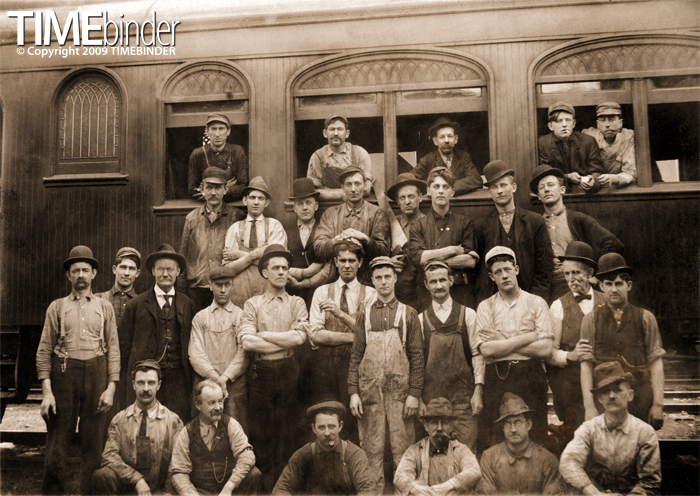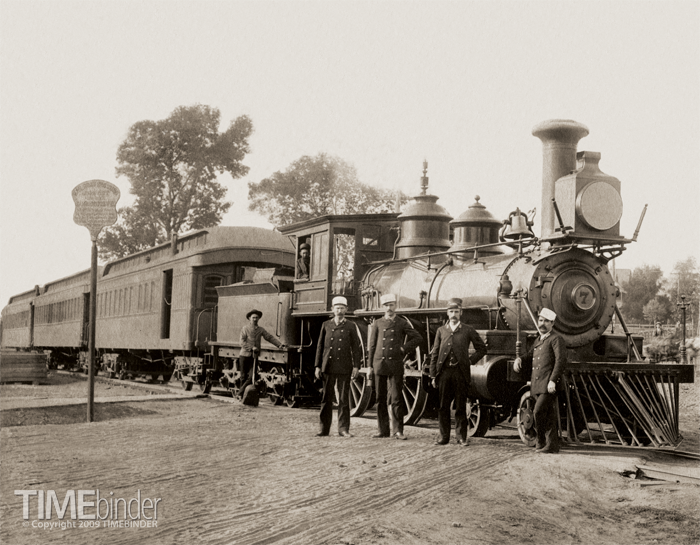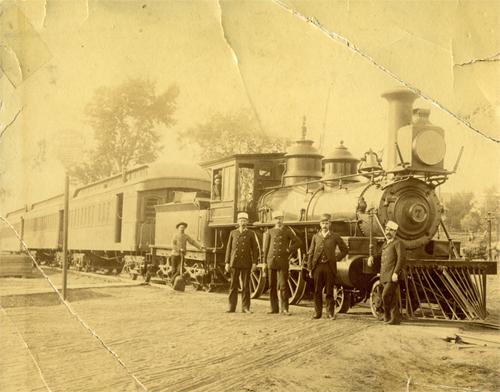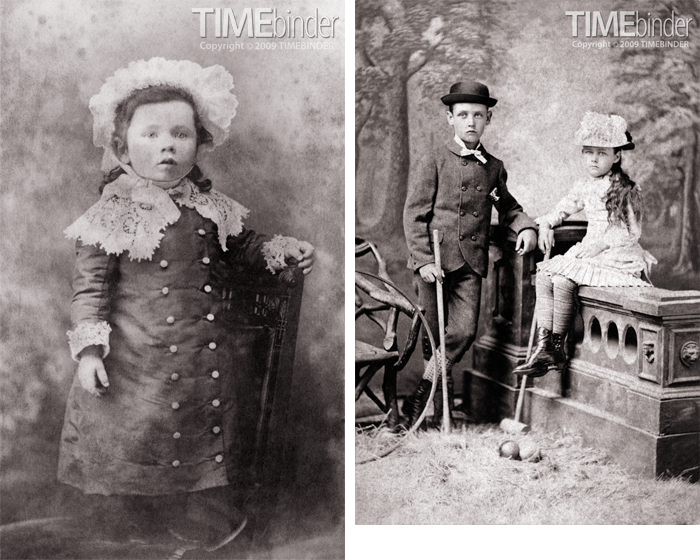Yard Crew 1890
 Sunday, September 20, 2009 at 7:52PM
Sunday, September 20, 2009 at 7:52PM 
The seller of this large cabinet print conjectured that this was Norfolk &Western but I have found nothing in the photograph to corroborate it. There is no company name on the car because it is a private one either being renovated or repurposed by this crew. It's anyone's guess who took the photograph or for what purpose, but it is my impression that they are a team that has the sort of camaraderie that comes from working closely for quite some time. There are the usual clowns and jokers you might expect – the broad shouldered man in the center clasps his hands on top of the head of the man in front, who shows that he minds not at all.
This is a good print to consider what mongrel creatures humans actually are. There is no other creature on the planet with anything like the variables that occur in physique or face. Most other creatures share considerable clone-like similarity, relying on many senses to distinguish one another. Even our pets and domesticated animals come from single species that we have bred into variants for our own caprice and purposes; left alone, they would eventually revert to what they were before we became involved. Humans' best natural functions are sight and language, so we may have evolved in a much different way not entirely because of geography or resources but for individual visual distinction – each of us recognizes a myriad of people we know and thousands we have seen and do not personally know. It is a remarkable state and capacity that is not shared by any other earthly single species life form that shares the same chromosomes. We take in most of our social information by reading faces, and we are largely unconscious of doing so. Think about it. Life is interesting partly because we find other faces endlessly interesting – we are naturally that way.







